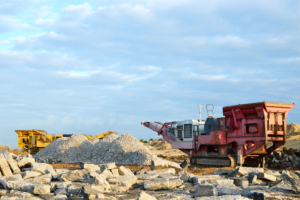Atlassian (NDQ:TEAM): Will this Aussie home grown tech company be made or broken by the AI boom?

Are Aussie investors really poorer for not having Atlassian (NDQ:TEAM) on the ASX? While many of the ASX’s tech stocks like Xero (ASX:XRO) and WiseTech (ASX:WTC) have rebounded from the Tech Wreck – and plenty of US tech stocks have too – Atlassian has not and is flat in 5 years and is down 30% in 2025.
That being said, it is up 25% if you use a strict 12-month timeline given a bull run in shares during the 2nd half of CY25 following an earnings miss that some investors (correctly) saw as a buying opportunity. The company is up 10x since its IPO a decade ago. And what’s more – it just spent US$1bn to buy a US software firm, the most it has ever spent on an acquisition.
Let’s take a deep dive into the company.
What are the Best ASX Tech Stocks to invest in right now?
Check our buy/sell tips
Atlassian’s story
Let’s take a brief jump back in time for a bit. Scott Farquhar and Mike Cannon-Brookes co-founded the company straight after they graduated from university in 2002 and right after the dot com bubble.
The first two products were Jira and Confluence which enabled software developers to track issues and collaborate with one another. Farquhar and Cannon-Brookes knew these products were needed and they could fill a hole in the market.
The freemium model at the time enables a lot of people to start using it quickly. The company grew both organically and through M&A, particularly in 2007 when it bought Cenqua and in 2012 when it bought Hipchat. No external capital was raised until 2010.
Atlassian went to Wall St before Bridge St
The company’s listing came in late 2015 were it was valued at US$4.4bn, A$6.1bn, and shares traded at US$21 per share. The listing in New York came despite Sydney being one of its two major offices – the other being San Francisco, although it shifted its global headquarters to the UK 2 years prior. It is not as if it is abandoning Sydney, if its building of the Atlassian Tower near Sydney’s Central Station is any indication.
Whenever interviewed and asked why the company is not listed on the ASX, Farquhar and Cannon-Brookes would typically state the US market was bigger and mature. Many suspect, and we do too, that it was the ASX’s intolerance to dual class share structures.
Atlassian has a dual-class structure where shares owned by Cannon-Brookes and Farquhar have 10 times the number of votes than other shareholders. Farquhar announced earlier this year he could be standing down as co-CEO, but would remain on the board. The pair still own about 40% of the company but have over 80% of voting power…for now.
Concerns with Atlassian
Now to the flip side. Atlassian faces tough competition with Microsoft and Oracle, as well as a tough time getting existing customers to ‘upgrade’. Even when the customers give a yes, it takes time to close deals and it turned out deals were taking longer to close than they used to.
Another concern is was the company is not yet profitable, at least not on an annual basis and still is in mid-2025. Many of the companies that gained the most after the Tech Wreck were companies that became profitable, or made substantial progress towards doing so.
There’s has also been a case to be made that some of the founders’ side hustles have been causing a distraction such as Mike Cannon-Brookes’ war on AGL Energy’s board and Scott Farqhar’s push to get his alma mater Cranbrook co-ed – while both were successful, neither came without a cost.
Scott Farquhar formally stood down as co-CEO last year. He has remained on the board but said he wanted to spend more time with his family and on other endeavours. One such endeavour is addressing Australia’s productivity – he scored an invite the forthcoming productivity roundtable, has publicly expressed some ideas and his actions likely won’t end post the round table. He is the chair of lobbyist group Tech Council of Australia.
Mike Cannon-Brookes is still there, but the impact his split from his wife will have on his 18.4% stake in the company still isn’t certain. Remember his shares have more voting power than other investors…so Annie could be calling a few shots.
Why Atlassian has been volatile in the last 12 months
Now let’s turn to the earnings miss of August 2024. It is a year ago now but it is important to bring up to provide context about where it is now. After promising 20% revenue growth over the next 3 years, and reiterating that target only 3 months prior, Atlassian said it expected just 16% growth.
The next couple of earnings reports were better with the company able to boast of closing many deals it was taking a while to close. It grew overall revenues by 21% in the quarter, and Cloud revenues by 30%, and it narrowed its net loss from US$84.5m to US$38.2m. So investors set aside the fact that it still was not profitable after over 20 years.
Atlassian’s profitability has been delayed because of R&D costs as well as paying out a higher amount of stock-based compensation (it paid US$346.8m in Q1 of 2025 alone!). Atlassian boasted 300,000 customers, over 500 of which spent more than US$1m a year, and its customer base purportedly included 85% of Fortune 500 companies.
A difficult 2025
CY25 has been more difficult as Trump’s tariffs hit many companies and investors ponder where their companies are in the AI race. In Atlassian’s case, they think the company is falling behind. Atlassian’s response has been to build an AI tool called Rovo that can retrieve information and allow non-developers to build custom AI agents to perform tasks autonomously.
Atlassian has also claimed it could benefit from tariffs because it could be a one-stop shop for customers as opposed to having them rely on software from many vendors. Of course this costs money to build up its product suite and hire workers to build it and will mean profitability will be further down the track. Hang on? Isn’t Atlassian laying off staff? Yes, it laid off 150, but Cannon-Brookes has publicly stated there would be more developers in the world five years from now.
Atlassian’s most recent quarterly result released last week, which also marked its annual result release, saw the departure of Atlassian’s president Anu Bharadwaj after 12 years. Mike Cannon-Brookes felt the need to open the earnings call to assure investors he wouldn’t be going anywhere.
Annual revenues were US$5.2bn but its annual loss was US$256.7m (albeit down from US$300m). In the next year, Atlassian expects 18% revenue growth, and named Google as one customer it signed a contract with to make Jira, Loom and Confluence avaliable on its marketplace.
A US$1bn acquisition
Only a few days ago, Atlassian paid US$1bn to buy US software firm DX only a few days prior to buying The Browser Company for US$160m. Founded in 2020, DX helps engineering firms measure, understand and improve developer productivity and satisfaction. Cannon-Brookes said it would help his company’s customers,’ Understand if they’re making the right investments to win in the AI era’. DX will sit alongside Atlassian’s existing tools to measure AI adoption and impact.
As for The Browser Company, the New York-based firm is behind Arc which has its own web browser. Atlassian’s plan is to use the underlying technology to create a platform connecting existing Atlassian applications. Yes, it will have AI features. What’s so special about it? Cannon-Brookes said this browser was for work and wouldn’t have users stuck in a ‘forest of tabs’.
Growth is expected over the next 4 years
28 analysts cover the company and their target price is US$274.49, more than 30% higher than the current share price of US$171. But even at its current price, Atlassian is at an EV/EBITDA of 27x, a P/E of 40x and a PEG of 2.5x.
They expect over 18% revenue growth in the next 2 years, US$6.2bn in FY26 and US$7.3bn in FY27. Its EPS was -US$0.98 in FY25 but is expected to be -US$0.65 in FY26 then -US$0.14 in FY27 followed by its maiden profit the following year.
However, investors will be watching the company closely and not be afraid to respond completely differently from quarter to quarter dependant on what they see. They’ll want to see growing revenues, narrowing losses and hopefully the split of the Cannon-Brookes not resulting in Annie having half (or anywhere remotely near half) of Mike’s voting power.
Conclusion
Atlassian has potential, no doubt. But it is one of many tech companies trying to respond to AI, and there is no guarantee any tech giant will maintain its place as a giant.
Blog Categories
Get Our Top 5 ASX Stocks for FY26
Recent Posts
Develop Global Wins $200m OceanaGold Contract- What It Means for Investors
Develop Global (ASX: DVP) climbed 4% to A$4.36 on Friday after securing a A$200 million underground development contract with global…
Nova Minerals Drops 14% on $20m Capital Raise- Buy or Avoid?
Nova Minerals (ASX: NVA) dropped nearly 14 per cent to A$0.90 following the announcement of a US$20 million (approximately AUD…
WiseTech (ASX:WTC) Rises After Richard White Cleared of Misconduct – Should You Buy the Dip?
WiseTech Global (ASX: WTC) climbed 3 per cent to A$70.18 on Friday after founder and Executive Chairman Richard White was…



